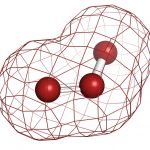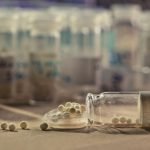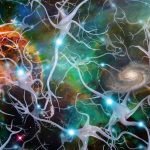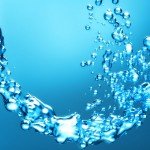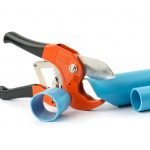Advanced Testosterone Therapy in Men
Restoration and Balance
Barry Wheeler, ND, ABAAHP
Low testosterone in the United States appears to be an epidemic, and naturopathic physicians are well suited to address this problem.1,2 As naturopathic physicians, we are trained to treat the cause of the problem whenever possible. For example, we recognize that erectile dysfunction is not a sildenafil deficiency, but rather a symptom of an underlying problem. Erectile dysfunction (ED), in my experience, is often due to an androgen deficiency.
Erectile dysfunction appears to be an epidemic in the United States.3 Some research estimates that over 1 in 10 men have ED. Currently, 70% of these men receive no treatment for their ED. Rates of other health problems in men are also skyrocketing. Men are increasingly experiencing low mood, obesity, and fatigue, and recently it was reported that rates of suicide in middle-aged men are increasing.4 Low testosterone may be the common denominator in all these problems.
While association does not necessarily equal causation, let’s just assume for a moment that low testosterone can cause multiple health problems in men. Naturopathic physicians are trained to treat the cause of the problem. The first logical step is to check your patient’s testosterone level. The next logical step (assuming a low level) is to look for the cause. This is an important question.
I’m excited to discuss with you 3 of my favorite topics: testosterone therapy, naturopathic medicine, and men’s health. This paper is far from a complete review of the practical application of testosterone therapy in clinical practice, but I hope it inspires you to learn more about endocrinology and its clinical value.
Naturopathic Medicine and Testosterone Therapy
There are many courses available to assist you with diagnosing low testosterone in men. In a review I co-authored with Lara Pizzorno, MDiv, MA, LMT, “Bio-Identical Hormone Replacement: Selecting the Right Hormone Test(s) for Your Male Patient,” we found measurements in blood and urine to be the most useful indicators for testosterone therapy.5 Saliva testing has been popularized as a novel approach to hormone testing due to its cost-effectiveness and ease of use. I generally only use saliva measurement to check free cortisol levels in men.
The American Academy of Anti-Aging Medicine (A4M) offers numerous courses on bioidentical hormone replacement therapy, with a broad range of perspectives on laboratory testing. Interestingly, A4M has a membership of mostly medical doctors, but the therapeutic recommendations are very naturopathic and integrative. In my opinion, good medicine is good medicine.
I cannot stress enough the importance of lab testing when balancing hormones. Naturopathic physicians are very well-suited to hormone test interpretation because of our training in physiologic ranges, with regard to optimal and suboptimal ranges. We are often considered by the public as the best doctors to treat primary hypothyroidism because of our holistic approach that includes comprehensive lab testing, compounded medications, and nutritional support. And, I assert, we should also be considered among the best doctors to treat primary hypogonadism.
Many doctors think that thyroid stimulating hormone (TSH) should be used to evaluate the thyroid. This assumption is very likely false.6 While TSH may provide some useful information, it tells you nothing about the actual levels of the thyroid hormones, T3 and T4. Poor conversion of T4 to T3 can result in a normal TSH while T3 levels are still deficient. The same is true for testosterone. We would never assess testosterone levels by only measuring the signal from the brain to the testicles, ie, luteinizing hormone (LH). Although assessing a man’s LH level is important, it does not tell you the patient’s testosterone level.
There are numerous ways to increase testosterone levels. For example, we can increase testosterone levels simply by reducing estradiol levels. Testosterone is the main source of estradiol in a man’s body. Testosterone converts to estradiol through the aromatase enzyme. Patients with insulin resistance are at increased risk of hyper-aromatization and excess estradiol production.7,8
What Causes Low Testosterone?
The cause of low testosterone is an important question. For example, a prolactin-producing tumor, ie, a prolactinoma, can cause low testosterone. Missing the diagnosis of a prolactinoma can have severe consequences for the patient. Prolactinomas are easier to treat when discovered at an earlier stage. The use of medications such as cabergoline can effectively treat smaller prolactinomas and prevent the need for surgery.
Other important diagnoses include POEMS Syndrome (a disorder involving polyneuropathy, organomegaly, endocrinopathy, monoclonal gammopathy, and skin changes) and neuroendocrine-producing tumors, which can produce estrogen and cause secondary hypogonadism. These are rare conditions, and often the cause of the low testosterone is difficult to determine with present technologies that are limited by cost and scope. Low testosterone is often iatrogenic (eg, opioids). A common cause of low testosterone in men is excessive conversion of androgens to estrogens. The conversion of testosterone to estradiol (and androstenedione to estrone) tends to increase as men age, causing testosterone levels to decline. Prostate cancer is more correlated with increases in estradiol than testosterone.9 In fact, higher testosterone levels may be protective of the prostate.10,11 Ever notice how men tend to get more sensitive as they get older? There are safer ways to get in touch with your feminine side.
Obesity tends to occur with insulin resistance, and the aromatase enzyme concentrates in fat tissue. It therefore makes sense that with increased fat mass, more testosterone would be converted to estradiol. Visceral adiposity and metabolic syndrome have both been found to predict lower total testosterone levels.12,13 Obesity increases the risk of cardiovascular disease and erectile dysfunction. Obesity and insulin resistance can cause a downward spiral in a man’s health that can be difficult to reverse. Testosterone is essential for proper blood sugar regulation. Estradiol is part of a negative feedback loop in the pituitary. Estradiol signals a decrease in the LH signal to the testicles, causing testosterone levels to decrease. As the testosterone levels decrease, muscle converts to fatty tissue and blood sugar regulation problems increase.14 Lower testosterone levels reduce insulin sensitivity15 and have been associated with type 2 diabetes.16 This downward spiral is becoming an epidemic in this country. Not all men with obesity have low testosterone; further studies are needed to better assess the relationship between androgen deficiency and obesity. The problem is more complex than just measuring free and total testosterone levels. Androgen receptors may also be a factor.
Pollution can cause low testosterone.17,18 There are numerous endocrine-disrupting chemicals in our environment, such as phthalates.19,20 A wide variety of consumer products, including cosmetics, personal-care products, children’s toys, food packaging, and cleaning and building materials are all known to contain phthalates. Phthalate products can be measured in your urine, which helps determine your exposure. Heavy metals can impair the enzymes involved in hormone synthesis and can also be measured in urine.
Stress can cause low testosterone.21 I heard that ever since the September 11th, 2001, terrorist attacks, stress levels in the United States have increased significantly. Stress increases the production of stress hormones such as cortisol. This can lead to a “pregnenolone steal” which removes precursors from other hormones, decreasing their production. The adrenal hormone, dihydroepiandrosterone (DHEA), is a major hormone precursor in our bodies and is also an androgen. DHEA deficiency can lead to testosterone deficiency. Thus, supporting the adrenals is still a good idea.
Restoring Balance
We must follow our naturopathic tenants and always remember to first do no harm. Our philosophy guides us when treating patients. If a male patient has any symptoms of low testosterone, it is important to check his testosterone levels. Many patients come to me because I am willing to check their level of testosterone. They report that their primary care doctor was unwilling to do so.
Doctors often attribute health problems such as erectile dysfunction and frailty to “aging.” In my opinion, the aging process can always be improved and testosterone can decline at any age. Research now supports the use of testosterone therapy for the aging male to improve quality of life.22 As naturopathic physicians, we have many more options available to help our patients prevent and delay the effects of aging.
The key is balance.
When I explain testosterone therapy to my hypogonadal male patients, I give them a number of treatment options. Optimizing testosterone levels requires monitoring of estradiol because these two hormones balance with each other. By decreasing the conversion of testosterone to estrogen, you can simultaneously and safely increase testosterone. Most guys with testosterone deficiency tend to convert too much of their testosterone to estrogen. If not addressed, testosterone therapy can simply result in higher estrogen levels. It is important to avoid increasing estradiol levels beyond the midrange.
If you look up online the side effects of testosterone therapy using conventional approaches such as testosterone injections or topical preparations, you will find that most of these side effects are due to increases in estradiol. Some of the common side effects of conventional testosterone therapy include prostate enlargement and cancer, breast enlargement, and deep vein thrombosis.8,23-25 These are all symptoms of too much estradiol.
Estradiol stimulates growth in the prostate. Interestingly, saw palmetto, unlike finasteride, blocks androgen and estrogen receptors in the prostate. Finasteride is also correlated with an increased risk of more aggressive forms of prostate cancer.26 Perhaps that’s why we don’t see finasteride being touted as the savior of men’s health despite its continued use to treat benign prostatic hypertrophy and hair loss.
Elizabeth Sutherland, ND, wrote an article in 2005 that was published in The Permanente Journal, entitled “Healing Metabolism: A Naturopathic Medicine Perspective on Achieving Weight Loss and Long-Term Balance.” She discusses the simplistic views doctors use when trying to help patients lose weight, such as the age-old idea that if calories consumed are less than calories used, you lose weight. That is why helping patients lose weight can be so frustrating. When this concept doesn’t work, the patient may be demonized as a cheater. But what if they really are eating less and burning more? What happens when a person decreases their caloric intake substantially?
The work of Dr A.T.W. Simeons with the human chorionic gonadotropin (HCG) diet has helped put focus on the problem of merely decreasing calories.27 When a person decreases his or her caloric intake, the hormone balance may be disrupted, causing the person to lose the wrong kind of weight, such as muscle. When hormones remain balanced while calories are reduced, the body is better able to maintain this muscle and lose excess body fat. Because HCG stimulates hormone production in the gonads, some believe it can help people lose weight more effectively. Other theories also exist.
Naturopathic physicians have the potential to help patients more effectively lose weight, due to our holistic approach. In her article, Dr Sutherland lists some of the factors that may affect weight loss, including “psychological stress levels, exercise history, dietary history, hormone balance, quality and amount of sleep, and toxic chemical exposure.” Hormone balance is a key factor in weight loss, including that of testosterone, which is so vital to men’s health.
Some men may need testosterone replacement to achieve optimal health. In younger men I have better success increasing endogenous testosterone levels with herbs, nutrition, and diet. In older men there may be a limit to how much testosterone they can produce. Depriving a man of testosterone therapy due to preconceived notions is unfair to male patients who are suffering from the symptoms of low testosterone.
If you are unfamiliar with the practice of hormone replacement therapy, it is important to educate yourself and refer patients to providers who focus on this treatment until you feel proficient. Testosterone replacement is much more complicated than just prescribing some compounded testosterone cream or manufactured gel.
As physicians, we must weigh the benefits and risks of any treatment. Iヘve been writing about naturopathic medicine and testosterone therapy since I graduated from the National College of Natural Medicine. For more information about my approach to testosterone therapy, please visit my blog at innovativemen.com/mens-health-tips/.
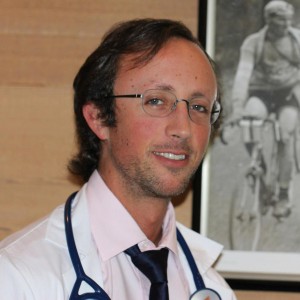 Barry Wheeler, ND, ABAAHP is a licensed naturopathic doctor in the states of Washington, Oregon, and California, and is certified by the American Board of Anti-Aging Health Practitioners in Anti-Aging and Regenerative Medicine. He attended and graduated from Oregon State University, majoring in biology and International Studies, and the National College of Natural Medicine (NCNM). He currently works at Innovative Men’s Health in Bellevue, WA.
Barry Wheeler, ND, ABAAHP is a licensed naturopathic doctor in the states of Washington, Oregon, and California, and is certified by the American Board of Anti-Aging Health Practitioners in Anti-Aging and Regenerative Medicine. He attended and graduated from Oregon State University, majoring in biology and International Studies, and the National College of Natural Medicine (NCNM). He currently works at Innovative Men’s Health in Bellevue, WA.
References
Araujo AB, O’Donnell AB, Brambilla DJ, et al. Prevalence and incidence of androgen deficiency in middle-aged and older men: estimates from the Massachusetts Male Aging Study. J Clin Endocrinol Metab. 2004;89(12):5920-5926.
Travison TG, Araujo AB, O’Donnell AB, et al. A population-level decline in serum testosterone levels in American men. J Clin Endocrinol Metab. 2007;92(1):196-202.
Kubin M, Wagner G, Fugl-Meyer AR. Epidemiology of erectile dysfunction. Int J Impot Res. 2003;15(1):63–71.
Phillips JA, Robin AV, Nugent CN, Idler EL. Understanding recent changes in suicide rates among the middle-aged: period or cohort effects? Public Health Rep. 2010;125(5):680-688.
Pizzorno L, Wheeler B. Bio-Identical Hormone Replacement: Selecting the Right Hormone Test(s) for Your Male Patient. Longevity Medicine Review. http://www.lmreview.com/articles/view/Selecting-the-Right-Hormone-Tests-for-Your-Male-Patient/. Accessed July 15, 2013.
O’Reilly DS. Thyroid hormone replacement: an iatrogenic problem. Int J Clin Pract. 2010;64(7):991-994.
Ahsan T, Banu Z. Male partial hypogonadotrophic hypogonadism with gynaecomastia and metabolic syndrome. J Coll Physicians Surg Pak. 2012;22(2):105-107.
Williams G. Aromatase up-regulation, insulin and raised intracellular oestrogens in men, induce adiposity, metabolic syndrome and prostate disease, via aberrant ER-α and GPER signalling. Mol Cell Endocrinol. 2012;351(2):269-278.
Ellem SJ, Wang H, Poutanen M, Risbridger GP. Increased endogenous estrogen synthesis leads to the sequential induction of prostatic inflammation (prostatitis) and prostatic pre-malignancy. Am J Pathol. 2009;175(3):1187-1199.
Severi G, Morris HA, MacInnis RJ, et al. Circulating steroid hormones and the risk of prostate cancer. Cancer Epidemiol Biomarkers Prev. 2006;15(1):86-91.
Raynaud JP. Prostate cancer risk in testosterone-treated men. J Steroid Biochem Mol Biol. 2006;102(1-5):261-266.
Allan CA, McLachlan RI. Androgens and obesity. Curr Opin Endocrinol Diabetes Obes. 2010;17(3):224-232.
Brand JS, van der Tweel I, Grobbee DE, et al. Testosterone, sex hormone-binding globulin and the metabolic syndrome: a systematic review and meta-analysis of observational studies. Int J Epidemiol. 2011;40(1):189-207.
Ribeiro AF, Camara C, Segre CA, et al. Cardiovascular risks of androgen deprivation therapy. Arq Bras Cardiol. 2010;95(3):412-415.
Kelly DM, Jones TH. Testosterone: a metabolic hormone in health and disease. J Endocrinol. 2013;217(3):R25-R45.
Corona G, Monami M, Rastrelli G, et al. Type 2 diabetes mellitus and testosterone: a meta-analysis study. Int J Androl. 2011;34(6 Pt 1):528-540.
Weiss B. Can endocrine disruptors influence neuroplasticity in the aging brain? Neurotoxicology. 2007;28(5):938-950.
De Coster S, van Larebeke N. Endocrine-Disrupting Chemicals: Associated Disorders and Mechanisms of Action. J Environ Public Health. 2012;2012:713696.
Joensen UN, Frederiksen H, Jensen MB, et al. Phthalate excretion pattern and testicular function: a study of 881 healthy Danish men. Environ Health Perspect. 2012;120(10):1397-1403.
Søeborg T, Frederiksen H, Andersson AM. Cumulative risk assessment of phthalate exposure of Danish children and adolescents using the hazard index approach. Int J Androl. 2012;35(3):245-252.
Jóźków P, Mędraś M. Psychological stress and the function of male gonads. Endokrynol Pol. 2012;63(1):44-49.
Hackett G, Cole N, Bhartia M, et al. Testosterone replacement therapy with long-acting testosterone undecanoate improves sexual function and quality-of-life parameters vs. placebo in a population of men with type 2 diabetes. J Sex Med. 2013;10(6):1612-1627.
Feneley MR, Carruthers M. Is testosterone treatment good for the prostate? Study of safety during long-term treatment. J Sex Med. 2012;9(8):2138-2149.
Rhoden EL, Morgentaler A. Treatment of testosterone-induced gynecomastia with the aromatase inhibitor, anastrozole. Int J Impot Res. 2004;16(1):95-97.
Glueck CJ, Richardson-Royer C, Schultz R, et al. Testosterone, thrombophilia, and thrombosis. Clin Appl Thromb Hemost. 2013 Apr 23. [Epub ahead of print]
Murtola TJ, Kujala PM, Tammela TL. High-grade prostate cancer and biochemical recurrence after radical prostatectomy among men using 5α-reductase inhibitors and alpha-blockers. Prostate. 2013;73(9):923-931.
Prinster L. HCG Weight Loss Cure Guide. USA: Everything Matters Publishing; 2012.




